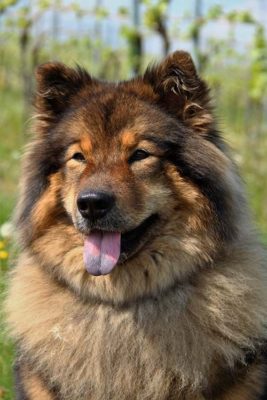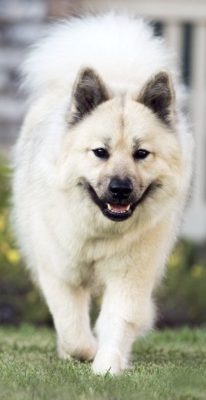Eurasier
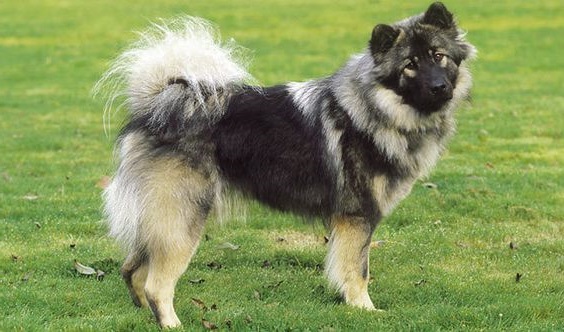
The perfect family pet and companion! Eurasiers are human-oriented and want to become the owner’s best friend and an excellent babysitter for children. They are wary of strangers but do not show aggression without reason. From their forefathers, chow-chow inherited stubbornness from the German shepherd – excellent security qualities.
Table of Contents
Breed Information
| Another Name | Eurasian, Eurasian Dog |
| Origin | Germany |
| Height | Males 52-60 cm Females 48-56 cm |
| Weight | 18-32 kg |
| Fur | Medium |
| Color | Black, yellowish-brown, wolfish, black with red tinges, black with silver, red |
| Lifespan | 11-14 years |
| FCI Classification | Spitz and primitive types |
| Group | Dogs for apartments |
| Price | From $1300 |
Breed Photos
Origin History
The Eurasier breed, also called Eurasian dog, Eurasian Spitz, or wolf-chow, was bred in Germany in the mid-20th century. It was recognized by the International Federation of Cynologists and got its official name in 1973. The desire to combine opposite types of dogs inspired Professor Julius Whipfel to crossbreed the German shepherd dog and the wolf-chow. He dreamed of a kind and affectionate wolf that would be a wonderful pet. It became famous and widespread in Germany and other European countries.
Appearance
The Eurasier is a sturdy, medium-sized dog with a well-proportioned build. The head is triangular in shape, almond-shaped eyes, nose, and lips always dark in color, ears triangular in shape. It is not a long, stocky torso, ring-shaped, very fluffy tail pressed to the body, muscular paws. The coat is thick, medium-length, with an undercoat. The monochromatic coloration includes all shades of red, black, reddish, and their lightened variants. Brown and white Eurasian Spitzes are considered culled.
Character
The perfect family pet and companion! Eurasiers are human-oriented and want to become the owner’s best friend and an excellent babysitter for children.
They are wary of strangers but do not show aggression without reason. From their forefathers, chow-chow inherited stubbornness from the German shepherd – excellent security qualities. They are reserved, patient, sometimes show hints of laziness and fatigue, so they don’t want to bark without reason and won’t.
Care
The Eurasier – a cleanliness and grooming model, neat, always self-care for the state of his thick coat, but helps comb out and periodically bathe not forget. Dogs are designed to live in an apartment, in close contact with humans as a companion. You can not leave the Eurasian alone and on a leash for a long time. Large private home and a spacious yard are great for active walks and games. Clean its ears and eyes once a week, where mites can sit. When trimming claws, keep the living tissue of your dog’s feet away from sharp objects. To keep your dog’s immune system in check, you should take good care of a proper diet, regular walks, and timely vaccinations.
Training
It is recommended for inexperienced dog owners. Not too active, but intelligent and hardy, need exercise, easy to train. The Eurasian is one of the best companion dogs, but surprisingly, very sensitive. Harsh words or actions can discourage the dog from obeying its master or learning new commands. The best methods in training are lots of praise and yummy treats. It is important to teach the Eurasian Spitz not to pick up food from the ground and not take it from strangers – such a bad habit can be hazardous and harm your beloved pet’s health.
Common Diseases
Proper maintenance is the key to good health and carefree coexistence.
The average lifespan of an Oirasir is thirteen years.
When breeding the breed, Breeders laid down a persistent immunity and a healthy body, which saves the Eurasier from contagious diseases.
But, unfortunately, there is no hiding and no hiding from them:
- epilepsy;
- distichiasis;
- dysplasia;
- urolithiasis.
Nutrition
Quality and healthy food is the key to the excellent health, activity, and vitality of the Eurasier. Half of the diet should consist of protein foods of animal origin. Lean meat, cottage cheese, and kefir contribute to the formation of the pet’s bones. Boneless fish, fruit, and vegetables are sources of vitamins that need to be introduced to puppyhood. Feeding twice a day is the optimal diet for an adult Eurasier.
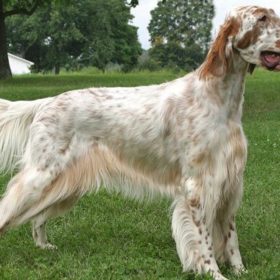 English Setter
English Setter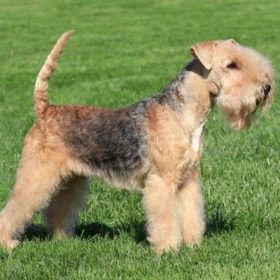 Lakeland Terrier
Lakeland Terrier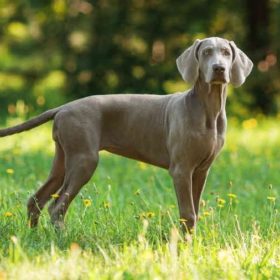 Weimaraner
Weimaraner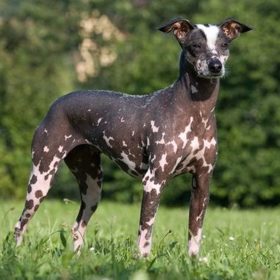 Peruvian Hairless Dog
Peruvian Hairless Dog Cavalier King Charles Spaniel
Cavalier King Charles Spaniel Curly-coated Retriever
Curly-coated Retriever